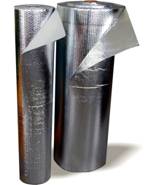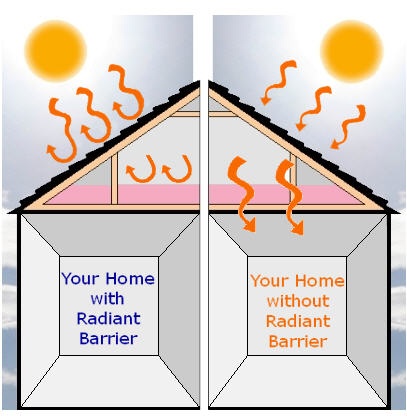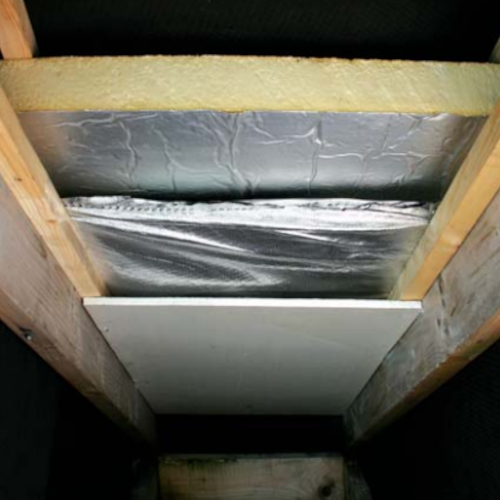DIY Guide to Reflective Insulation
by Mark Row
 How to Improve your Home Insulation
How to Improve your Home Insulation
If high monthly expenses on your electricity bills are giving you a headache, now is the perfect time to do something about it. Namely, although this may require some serious funds invested, note that this is problem that must be solved, why it can only be postponed, but will not go away by itself. This is why you need to find a durable solution, such as improving your home insulation. This will not only solve your money problems, but also have significant impact on your everyday life. In short, insulation works in a very simple way – it simply reduces the heat transfer from warmer to colder areas within your home, thus maintaining a more stabile temperature, regardless of the weather conditions outside. With no insulation installed, the warm air is free to travel outside through draughty windows, poorly constructed walls, the gaps in your ceiling and floor etc, which can all cause serious temperature drops during the winter and the other way around. Well, proper insulation will prevent this from happening and, among other things:
- lower your electricity bills, since heating and cooling devices will be less used;
- prevent (or at least reduce) air leaks within your home which are among the greatest sources of energy lost;
- reduce the risk of condensation and moisture causing serious problems to your building structure, thus prolonging its life and
- lower your household carbon footprint, due to less energy consumed on electrical appliances.
Now that you are aware of some potential benefits of installing proper insulation, it is time to present a DIY guide to reflective insulation, as one potential mean of dealing with the previously mentioned issues.
Heat Transfer Basics
In order of understanding how reflective insulation works, you will need a fact or two on the way the heat is transferred from one area (or surface) to another.
The first and most obvious way of heat transfer is by conduction. Simply put, the heat is conducted from one surface to another through a direct contact. If you touch anything that is above your body temperature (like a hot oven, for example) the heat will be transferred from the surface with higher temperature to your hand. Note that most insulation materials are usually design to prevent and/or slow down conductive heat transfer. This is the case with spray foam insulation or rigid PIR boards.
Another way the heat moves is through convection. The heat is transferred by condensation and steam, differing in temperature than the rest of the room. Just put your hand over a boiling pot and you will feel heat transferred by convection. Traditional insulation materials are usually designed to decrease and slow down convection heat transfer, such as rock or glass wool.

Finally, we come to radiant heat transfer. Namely, each surface above absolute zero emits radiant heat in all directions. The sunrays are a typical example of radiation. This is where reflective insulation works its magic, since there is no more efficient mean for slowing down radiant heat transfer, which is, according to some studies, probably the greatest source of energy loss, especially in some spaces that are under the direct influence of infrared rays (such as your attic space).
Reflective Insulation Concept
You will probably start to understand the importance of reflective insulation, when you hear that over 50% (even up to 80%) of heat loss during the winter is radiant. This is even more shocking during the summer, where radiant heat gain take over 90% in the overall heat amount of heat gain. Unlike other insulation materials that are, as mentioned, designed to reduce mostly convection and conduction heat transfer, but do not work well with radiation, this insulation type is made to reflect radiant heat, instead of absorbing it. This type of insulation will considerably reduce the amount of both heat loss and heat gain, since it will reflect it of its surface, with only small amount passing through the material. Another important advantage is that, unlike other materials that are often sensitive to moisture level changes and damp penetration (which is a common occurrence nowadays) which can affect their effectiveness (note that fiberglass insulation can lose up to 36% of effectiveness when exposed to 1% of change in humidity level), reflective insulation such as aluminum foil will not in any way lose its ability to reflect heat, regardless of the change of moisture levels within the premises.

Now, if you have opted for some type of reflective insulation, you will need proper guidance for installing it. You could either use a radiant insulation material solely, such as Alumaflex Multifoil Insulation or Low - E Reflective Foil Insulation (found right here at our online Insulation London shop), only if (depending on the construction and existing insulation) you can meet prescribed U and R values of insulation materials. On the other hand, if greater level of insulation is needed, you will have to combine the material with some other type such as PIR boards or glass wool. In this case, if you are planning on insulating your attic space, you could use either 100mm glass wool or 70mm PIR board between the roof rafters and then cover it with any of the mentioned reflective foils. The thing you will have to pay attention to, when adding insulation is to keep a gap of around 20-30mm between the insulation and the covering in order of allowing the foil to do its job and reflect heat of its surface, while still allowing heat transmission.
Choose reflective insulation products from our wide seletion of insulation materials for your home improvement project, or seek advice from our experts. You are welcome to leave a comment or share the article.

















































































































